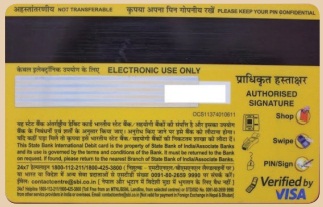Science : Chapter 7 : Magnetism
TEXTBOOK EXERCISES
I. Choose the best answer.
1. A magnet attracts __________.
a) wooden materials
b) any metal
c) copper
d) iron and steel
[Answer: (d) iron and steel]
2. One of the following is an example for a permanent magnet.
a) Electromagnet
b) Mumetal
c) Soft iron
d) Neodymium
[Answer: (d) Neodymium]
3. The south pole of a bar magnet and the north pole of a U-shaped magnet will __________.
a) attract each other
b) repel each other
c) neither attract nor repel each other
d) None of the above
[Answer: (a) attract each other]
4. The shape of the Earth’s magnetic field resembles that of an imaginary __________.
a) U-shaped magnet
b) straight conductor carrying current
c) solenoid coil
d) bar magnet
[Answer: (d) bar magnet]
5. MRI stands for __________.
a) Magnetic Resonance Imaging
b) Magnetic Running Image
c) Magnetic Radio Imaging
d) Magnetic Radar Imaging
[Answer: (a) Magnetic Resonance Imaging]
6. A compass is used for __________
a) plotting magnetic lines
b) detection of magnetic field
c) navigation
d) All of these
[Answer: (d) All of these]
II. Fill in the blanks.
1. The magnetic strength is maximum at the poles.
2. A magnet has two magnetic poles.
3. Magnets are used in dynamos for generating electricity.
4. Electromagnets are used to lift heavy iron pieces.
5. A freely suspended bar magnet is always pointing along the geographic north-south direction.
III. Match the following.
1. Magnetite – Magnetic lines
2. A tiny pivoted magnet – Natural magnet
3. Cobalt – Compass box
4. Closed curves – Ferromagnetic material
5. Bismuth – Diamagnetic material
Answer:
1. Magnetite – Natural magnet
2. A tiny pivoted magnet – Compass box
3. Cobalt – Ferromagnetic material
4. Closed curves – Magnetic lines
5. Bismuth – Diamagnetic material
IV. Consider the statements given below and choose the correct option.
a. Both assertion and reason are true and reason is the correct explanation of assertion.
b. Both assertion and reason are true, but reason is not the correct explanation of assertion.
c. Assertion is true, but reason is false.
d. Assertion is false, but reason is true.
1. Assertion: Iron filings are concentrated more at the magnetic poles.
Reason: The magnets are so sharp.
[Answer: (b) Both assertion and reason are true but reason is not the correct explanation of assertion.]
2. Assertion: The Earth’s magnetic field is due to iron present in its core.
Reason: At a high temperature a magnet loses its magnetic property or magnetism.
[Answer: (d) Assertion is false but the reason is true.]
Correct statement: The Earth’s magnetic field is due to the molten charged metallic fluid inside the Earth’s surface.
V. Answer briefly.
1. Define magnetic field.
Answer: The space around a magnet in which its magnetic effect or influence is observed.
2. What is artificial magnet? Give examples.
Answer: Magnets that are made by people in a laboratory or a factory are called artificial magnets. Eg.: Horse shoe magnet, bar magnet, U-shaped magnet, cylindrical magnets, disc magnets, ring magnets and electromagnets.
3. Distinguish between natural and artificial magnets?
Answer:
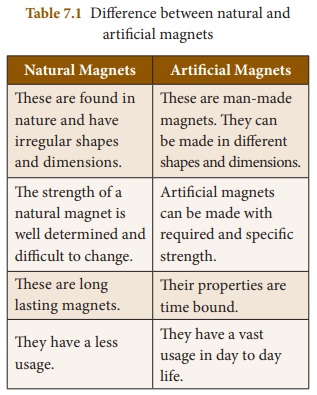
Natural Magnets
1. These are found in nature.
2. Have irregular shapes and dimensions.
3. The strength of a natural magnet is well determined and difficult to change.
4. These are permanent magnets.
5. They have a less usage.
Artificial Magnets
1. These are man-made magnets.
2. They can be made in different shapes and dimensions.
3. Artificial magnets can be made with required and specific strength.
4. Their properties are time bound.
5. They have a vast usage in day-to-day life.
4. Earth acts as a huge bar magnet. Why? Give reasons.
Answer:
(i) A freely suspended magnetic needle at a point on the Earth comes to rest approximately along the geographical north – south direction.
(ii) This shows that the Earth behaves like a huge magnetic dipole with its magnetic poles located near its geographical poles.
(iii) The north pole of a magnetic needle approximately points towards the geographic north (NG).
(iv) The magnetic north pole of the needle is attracted by the magnetic south pole of the Earth (Sm), which is located at the geographic north NG.
(v) Also, the magnetic south pole of the needle is attracted by the magnetic north pole of the Earth (Nm), which is located at the geographic south SG.
5. How can you identify non-magnetic materials? Give an example of a non-magnetic material.
Answer:
(i) Materials which are not attracted by magnets are called non-magnetic materials.
(ii) Example : Wood, Glass, Rubber, Plastic, Aluminium.
VI. Answer in detail.
1. List out the uses of magnets.
Answer:
(i) In ancient times, the magnet in the form of‘direction stone’ helped seamen to find the directions during a voyage.
(ii) Nowadays, magnets are used to generate electricity in dynamos.
(iii) Electromagnets are used in our day-to-day life.
(iv) They are used in electric bells and electric motors.
(v) They are used in loudspeakers and microphones.
(vi) An extremely powerful electromagnet is used in the fast moving Maglev train to remain floating above the tracks.
(vii) In industries, magnetic conveyor belts are used to sort out magnetic substances from scraps mixed with non-magnetic substances.
(viii) Magnets are used in computer in its storing devices such as hard disks.
(ix) In banks, the magnets enable the computers to read the MICR numbers printed on a cheque.
(x) The tip of the screw drivers are made slightly magnetic so that the screws remain attached to the tip.
(xi) At hospitals, extremely strong electro magnets are used in the MRI (Magnetic Resonance Imaging) to scan the specified internal organ.
2. How will you convert a ‘nail’ into a temporary magnet?
Answer:
(i) Spread some steel pins on a wooden board and bring an iron nail near them.
(ii) Now, make one of the magnetic poles of the bar magnet touch one end of the iron nail.
(iii) Slide it along its length in one direction slowly till the other end is reached.
(iv) Repeat the process, as shown in the diagram, 20 to 30 times.
(v) The magnet has to be moved in one direction only.
(vi) Avoid the swiping of the magnet back and forth.
(vii) Now, bring the iron nail near the steel pins.
(viii) The steel pins stick to the iron nail because nail has become a temporary magnet.
3. Write a note on Earth’s magnetism.
Answer:
(i) Earth has been assumed or imagined by the scientists as a huge magnetic dipole.
(ii) The south pole of the imaginary magnet inside the Earth is located near the geographic north pole and the north pole of the Earth’s magnet is located near the geographic south pole.
(iii) The line joining these magnetic poles is called the magnetic axis.
(iv) The magnetic axis intersects the geographic north pole at a point called the north geomagnetic pole or northern magnetic pole.
(v) It intersects the geographic south pole at a point called the south geomagnetic pole or southern magnetic pole.
(vi) The magnetic axis and the geographical axis (axis of rotation) do not coincide with each other.
(vii) The cause of the Earth’s magnetism, are as follows.
□ Masses of magnetic substances in the Earth
□ Radiations from the Sun
□ Action of the Moon
VII. Higher Order Thinking Questions.
1. Though Earth is acting as a huge bar magnet it is not attracting other ferromagnetic materials. Why? Give reasons.
Answer: Earth is not attracting other ferromagnetic materials because the magnetic character of ferromagnetic materials is affected by the external temperature. When they are heated, they become paramagnetic at curie temperature.
2. Why it is not advisable to slide a magnet on an iron bar back and forth during magnetising it?
Answer: It is not advisable to slide a magnet on an iron bar back and forth because moving it in opposite directions will work to cancel each other out.
3. Thamizh Dharaga and Sangamithirai were playing with a bar magnet. They put the magnet down and it broke into four pieces. How many poles will be there?
Answer: Each broken piece behaves like a separate magnet. Therefore, four pieces will have eight poles.
Student Activities
Activity 1
Take some iron filings in a paper and place a magnet near them. Do you see the iron filings being attracted by the magnet? In which part of the magnet they are attracted?
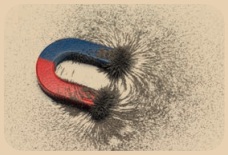
Answer: The iron filings are attracted near the ends of the magnet. These ends are called poles of a magnet.
Conclusion : This shows that the attractive property of a magnet is more at the poles.
Activity 2
Take a bar magnet and suspend it from a support. Hold another bar magnet in your hand. Bring the north pole of this magnet close to the north pole of the suspended magnet. What do you see? The north pole of the suspended magnet will move away.
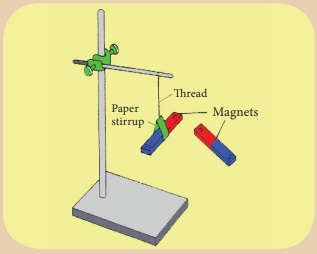
Answer: Inference : This activity explains repulsive property of a magnet that like poles repel each other i.e., a north pole repels another north pole and a south pole repels another south pole. If you bring the south pole of the magnet close to the north pole of the suspended magnet you can see that the south pole of the suspended magnet is immediately attracted
Conclusion : Thus, we can conclude that unlike poles of a magnet attract each other, i.e., the north pole and the south pole of a magnet attract each other.
Activity 3
Suspend a bar magnet from a rigid support using a thread. Ensure that there are no magnetic substances placed near it. Gently disturb the suspended magnet. Wait for a moment, let it oscillate. In a short time it will come to rest. You can see that the north pole of the magnet is directed towards the geographic north. Repeat the procedure a number of times. You will observe that the magnet is oriented in the same direction.
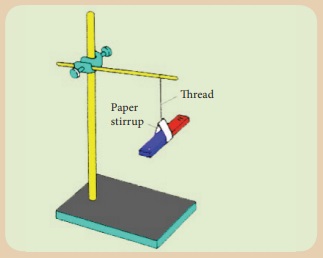
Answer: The magnet is oriented in the same direction.
This experiment shows that a freely suspended bar magnet always aligns itself in the geographic north-south direction.
Conclusion : The property of a magnet, by which it aligns itself along the geographic north-south direction, when it is freely suspended, is known as the directive property of a magnet.
Activity 4
Spread some iron filings collected from the sand uniformly on a sheet of white paper placed on a table. Place a bar magnet below the white sheet. Gently tap the table. What do you see? You can see the pattern as shown in the figure.
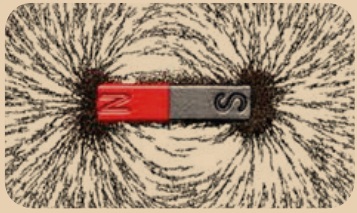
Answer: I can see the iron filings are arranged in the form of curved patterns around the magnet.
The space around the bar magnet where the arrangement of iron filings exists, represents the field of influence of the bar magnet. It is called the magnetic field.
Activity 5
Spread some iron pins, stapler pins, iron nails, small pieces of paper, a scale, an eraser and a plastic cloth hanger on a wooden table. Place a magnet nearby these materials. What do you observe? List out which of these things are attracted by the magnet? Which objects are not attracted? Tabulate your observations.
Answer:
Aim : To understand the behaviour of magnetic and non-magnetic materials.
Materials attracted by magnet
Iron pins
Stapler pins
Iron nails
Materials not attracted by magnet
Scale
Eraser
Small pieces of paper
Plastic cloth hanger
Activity 6
Spread some steel pins on a wooden board and bring an iron nail near them. Are they attracted? Now, make one of the magnetic poles of the bar magnet touch one end of the iron nail. Slide it along its length in one direction slowly till the other end is reached. Repeat the process 20 to 30 times as shown in the diagram. The magnet has to be moved in one direction only. Avoid the swiping of the magnet back and forth. Now, bring the iron nail near the steel pins. What do you notice? The steel pins stick to the iron nail because nail has become a temporary magnet.

Magnetisation is a process in which a substance is made a permanent or temporary magnet by exposing it to an external magnetic field. This is one of the methods to produce artificial magnets.
Do You KnowThere are three types of iron ores. They are: Hematite (69% of Iron), Magnetite (72. 4% of Iron) and Siderite (48.2% of Iron). Magnetiteis an oxide ore of iron with the formula Fe3O4 . Among these ores, magnetite has more magnetic property.
Know Your Scientist

William Gilbert laid the foundation for magnetism and suggested that the Earth has a giant bar magnet. William Gilbert was born on 24th May 1544. He was the first man who performed the systematic research on the properties of the lodestone (magnetic iron ore) and published his findings in the influential ‘De Magnete’ (The Magnet).
A compass needle, also known as plotting compass or magnetic needle, consists of a tiny pivoted magnet in the form of a pointer,which can rotate freely in the horizontal plane. The ends of the compass needle point approximately towards the geographic north and south direction.
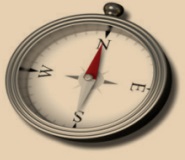
More to know
The temperature, at which the ferromagnetic material becomes paramagnetic is called the curie temperature.
Alnico cow magnet is used to attract sharp iron wire and other iron objects that may be ingested by animals while grazing thereby causing damage to their digestive tract.
The most powerful magnet in the universe is actually a neutron star called magnetar (magnetic neutron star) located in the Milky Way Galaxy. The diameter of the magnetar is 20 kilometer and its mass is 2 to 3 times that of the Sun. Its magnetic field is so enormous and lethal that it is capable of absorbing all the iron atoms from the bloodstream (hemoglobin) of a living body even if it is positioned at a distance of 1000 km from it.
Pigeons have extraordinary navigational abilities. It enables them to find their way back home even if you take them to a place where they have never been before. The presence of magnetite in their beaks enables them to sense the magnetic field of the Earth. Such a magnetic sense is called magneto-reception.
Earth’s magnet is 20 times more powerful than a fridge magnet.
Maglev train (Magnet levitation train) has no wheels. It floats above its tracks due to strong magnetic forces applied by computer controlled electromagnets. It is the fastest train in the world. The speed attained by this train is around 500 km/hr.

The strip on the back of a credit card/debit card is a magnetic strip, often called a magstripe. The magstripe is made up of tiny iron-based magnetic particles in a thin plastic film. Each particle is really a very tiny bar magnet about 20 millionth of an inch long.
